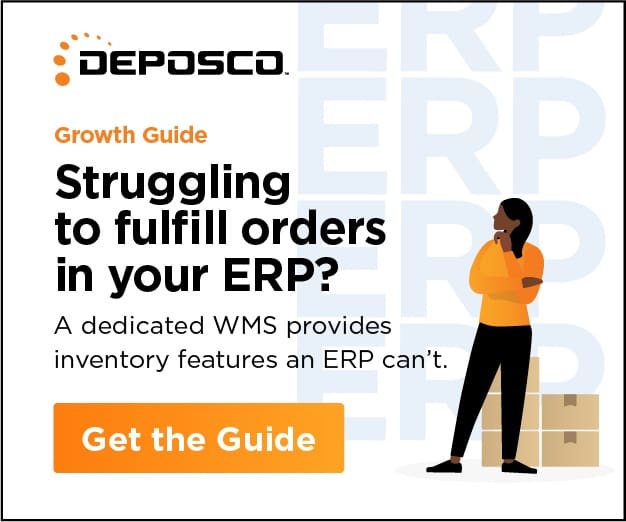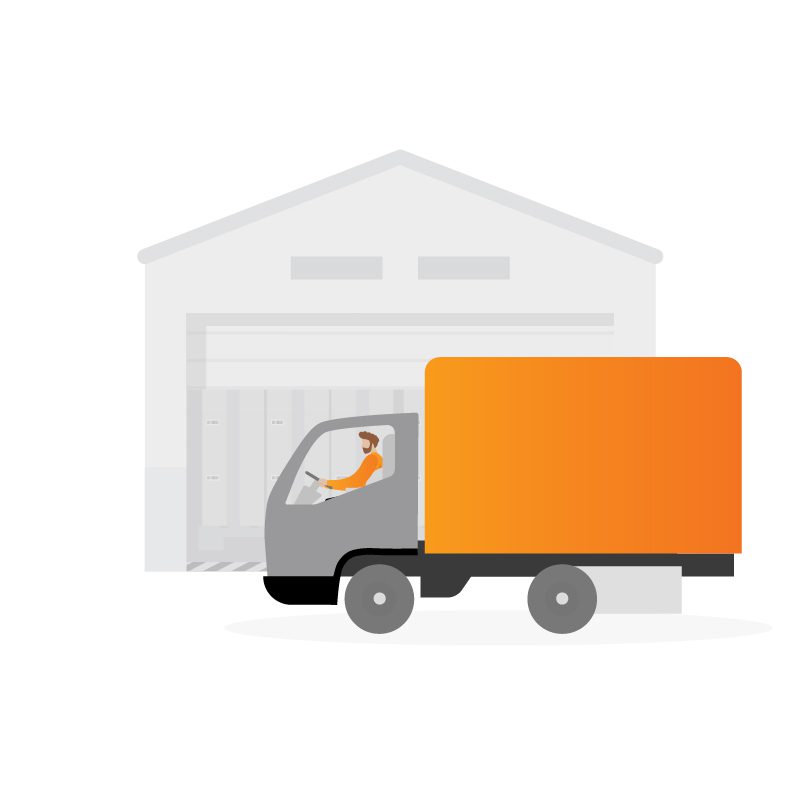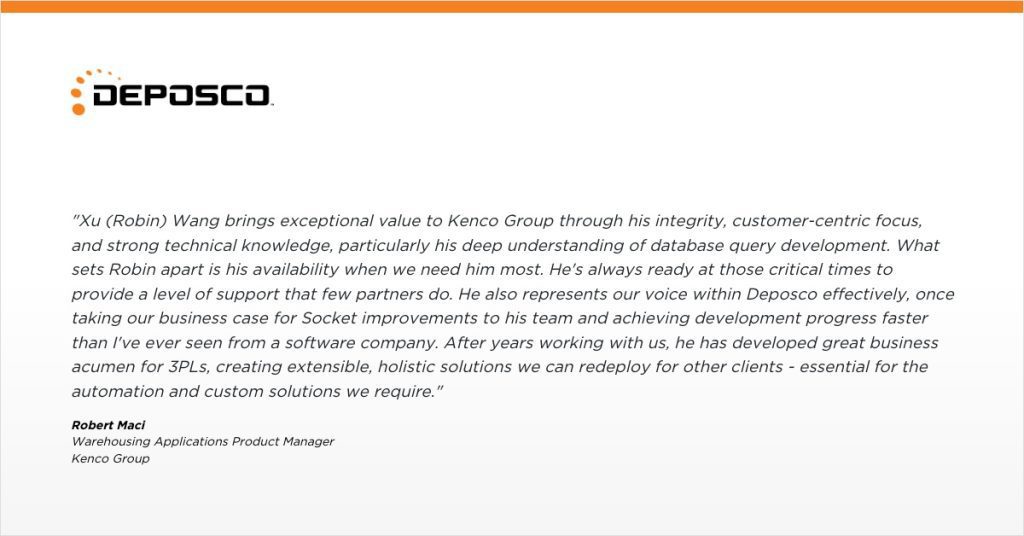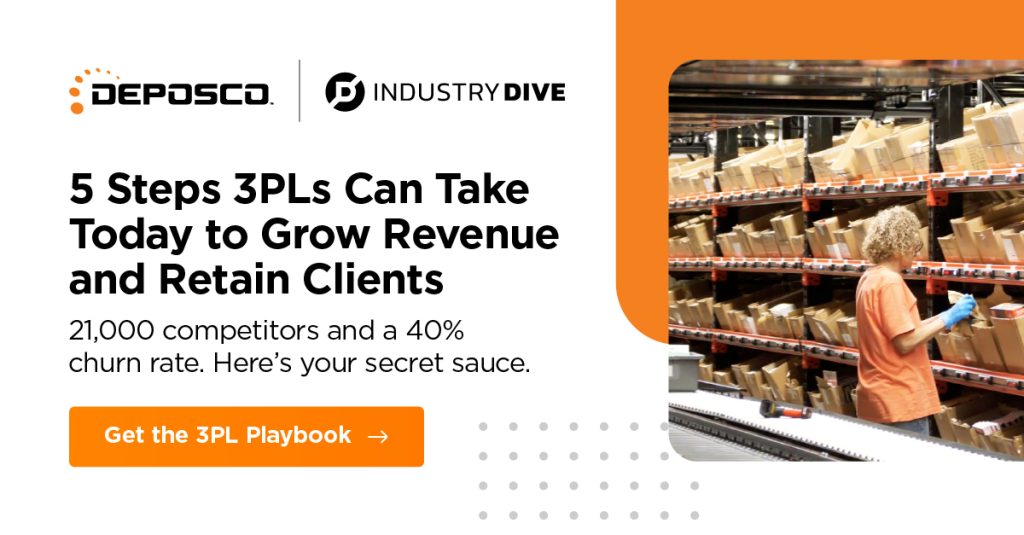Third-party logistics (3PL) integrations bring next-gen data exchange and platform flexibility to a highly competitive space where value and innovation win.
As a 3PL fulfillment company, you know speed and accuracy are the name of the game. Ecommerce brands expect you to be able to pick, pack, and ship to their customer in minutes.
To exceed service expectations, your 3PL WMS (warehouse management system) has to exchange data seamlessly with your client’s ecommerce platforms and marketplaces to orchestrate customer orders.
It’s a sure bet all of your clients are not using the same technology. Likely, they aren’t even natively compatible. Modern WMS software for your 3PL offers a broad range of integrations to provide that missing link so you can communicate with every one of your client’s systems, working closely with all of them to deliver seamless experiences. What does your WMS vendor do to help you navigate this?
Why Your Partner Matters
Integrations provide continuous innovation for 3PLs
3PLs are aligning their businesses toward technology, ecommerce innovation, industry-specific solutions, sustainability, and establishing a broader supply chain value offering. According to Gartner*:
“Leaders must make emerging technologies like 3PL automation an intrinsic part of their services offering, especially in warehouse and distribution centers, material handling, and storage.”
3PL integrations enable high levels of service and real-time data to the most prominent supply chain applications and ecommerce platforms, such as Shopify. Busy 3PL providers know that a Shopify 3PL integration is vital to serving the demand of modern shoppers.
Reduction in order cycle time
Compressing fulfillment cycle time requires real-time data from the order management system (OMS) – or ecommerce platform – to the WMS. The fulfillment process in your warehouse only starts when the system handling customer purchases notifies the WMS that there’s an order.
Your client’s buyer expects prompt order delivery. There has to be seamless data exchange between the ordering system and the WMS.
Enabling your 3PL system and the client’s systems to connect directly streamlines the order process. Seamless integration drives value for your clients and their customers.
Your WMS must offer a broad range of 3PL integrations to support order processing – end to end:
- Enable real-time order syncing between the WMS and other supply chain applications
- Eliminate manual errors by minimizing human data entry
- Minimize picking and shipping errors through immediate task validation
- Instantly compare shipping rates to ensure the fastest delivery at the lowest cost
- Provide seamless order tracking and automated 3PL billing to your clients
Bespoke ecommerce 3PL integrations
WMS 3PL integration offers the capability to solve unique client needs, such as commitments to sustainable logistics. 3PL integration solutions – within the WMS – simplify the combination of orders to optimize loads, remove miles through sequencing, and reduce trips in last-mile delivery. They also provide specialized support to manage returns with less waste.
If your client has specific business needs, say special packaging requirements, the 3PL integration enables WMS system-directed decisions. Customized workflows that support diverse client fulfillment processes, like retailer-specific labeling, elevate demand for your 3PL services.
Real-time inventory visibility
Inventory visibility is key to deploying tight WMS system integrations for 3PLs. Keeping the client’s systems informed of inventory at all times, in all locations, and all statuses ensures accurate product availability.
To prevent the client from having issues with stockouts or overstocks, your inventory management functionality should provide:
- Real-time synchronized inventory across all systems, platforms, and applications
- The ability to quickly allocate inventory from any available location, including stores, drop shippers, vendor direct, or any other location
- Full consideration of the cost and SLA impacts of the various options presented to create the best outcome for all parties
Client retention with an integrated 3PL
Seamless integrations for 3PLs keep clients coming back (because their customers keep coming back). They accelerate order processing so orders are ready for carrier pickup and prompt delivery. They enable shipping status visibility so the client can keep their customers informed.
Your 3PL can pivot easily when faced with sudden order fluctuations, demand spikes, or last-minute buyer requests. With real-time information, you immediately make operational adjustments in response to order changes or new information.
For example, if the requested item is unavailable in one warehouse, you can survey your distribution network to source from an alternative location. This shouldn’t be limited to just the owned network and should allow fulfillment collaboration among various parties. You can even contact another supplier to fulfill the customer’s order on time.
Happy shoppers, happy clients.
Reliable 3PL API connections
As a 3PL your job is to keep orders, inventory, and shipping statuses up to the minute across all systems and platforms and know that the data is reliable.
Proper 3PL WMS integration must provide real-time data with:
- One codebase
- Easy-to-learn tools for training
- Quick onboarding of new clients and requests
- Broad library of pre-built APIs for linking disparate systems, including all major shipping carriers
The APIs connecting systems and platforms must be robust enough to enable smooth communication with immediacy, consistency, and accuracy. They ensure a constant flow of information so that the WMS can quickly make the right decisions about order fulfillment.
Your 3PL integrations must support customizable reporting and analytics for continuous improvement. Advanced supply chain analytics tools with predictive capabilities can paint a comprehensive picture of potential disruptions before they happen, along with prescriptive insights and automated corrections. They also help inform labor and shipping performance and decision-making insights about order trends and inventory levels.
Types of 3PL Integrations
 Access to ready-made software integrations simplifies connecting existing and future systems, like ERP, CRM, marketplaces, and more. That means significantly lower costs, implementation time, and technical resources required to start seeing value from your investment.
Access to ready-made software integrations simplifies connecting existing and future systems, like ERP, CRM, marketplaces, and more. That means significantly lower costs, implementation time, and technical resources required to start seeing value from your investment.
Ensure the provider continuously invests in and expands their 3PL integrations library every year.
Ecommerce integrations
Out-of-the-box ecommerce OMS and WMS integration capabilities play a significant role in your 3PL operations. These ensure seamless, automated data exchange and alignment with crucial operational functions.
For clients operating ecommerce environments like Amazon FBA and WooCommerce, 3PL integrations reliably sync product information, financial data, the client’s ERP data, POs, and vendor management.
Shipping integrations
Streamline your logistics and fulfillment every step of the way. Connect important fulfillment operations to shipping carrier systems, allowing your 3PL or client to deliver: accurate, real-time tracking updates and delivery estimates; shop rates easily; auto-generate shipping labels; and compare shipping carrier performance, and improve shipping efficiencies.
One point of caution: many WMS providers only offer a few mainstream carriers in their integration library. Cloud-built platforms like Deposco develop dozens, and they are fully implemented, managed, and supported.
Marketplaces
The list of specific marketplace rules and regulations for labeling, packing, and shipping gets longer yearly. Non-compliance leads to stiff penalty fees and chargebacks after packages have left your warehouse.
Marketplace integrations help your 3PL track and streamline processes to comply with these guidelines, saving time and money. They can also help manage the returns process, which speeds up refunds for your clients while improving their marketplace seller standings.
Retailer/Electronic Data Interchange (EDI)
EDI integrations in a 3PL WMS are used to streamline operations, improve inventory management, and enhance order fulfillment in B2B. They automate data exchange, reducing manual errors and increasing efficiency while providing real-time inventory updates to enable effective stock management.
3PL integrations for EDI also ensure compliance with your retail clients’ dynamic shipping and labeling requirements. Ultimately, they can lead to significant cost savings for your company and client.
Materials Handling Equipment (MHE)
MHE integrations within 3PL WMS software enhance efficiency, productivity, and orchestration between different equipment types. This is critical to improve your peak-season warehouse management health. Seamless communication between the WMS and warehouse equipment leads to better resource utilization and real-time tracking of goods.
WMS integrations for MHE help your 3PL monitor equipment usage, reduce manual labor, improve space utilization, and minimize equipment downtime, significantly reducing costs. Advanced systems report on the status of machinery – from location to battery status – in real time and provide maintenance recommendations.
Cartonization
Cartonization is strategic to your 3PL business. Integrations for cartonization enable you to find hidden savings while improving responsibility for ESG and emissions. Quick to deploy via a modern WMS, these solutions provide integrated warehouse automation to identify things like:
- Which carton format is ideal?
- Can multiple orders be consolidated?
- Are the SKUs going into the box fragile, nestable, or foldable?
- Does it meet carrier requirements?
- Are the materials recyclable, sustainable, or reusable?
- Can we easily relay dimensioning to a custom box builder?
Enterprise Resource Planning (ERP)
Reliable integration with existing ERPs or CRMs is critical to operational efficiency. Integrations for ERPs provide enhanced visibility and cost-effectiveness by streamlining information flow between traditionally siloed systems and the WMS, reducing manual data entry and tasks.
They provide real-time updates on inventory, orders, and shipments, enabling better management and planning. Your 3PL can make more accurate forecasts and decisions by synching real-time inventory data and trends.
Ultimately, these integrations reduce errors, improve inventory management, and optimize resource allocation for the company. The payoff is particularly big when a company uses an ERP that has reached its limitations or is being stretched into purposes it was never intended. A purpose-built WMS uses integrations to take data from the ERP and perform the functions that were never possible in the ERP.
 Related: NetSuite ERP is Not a Warehouse Management System
Related: NetSuite ERP is Not a Warehouse Management System
Explore the industry’s largest library of pre-built WMS software integrations by type.
Steps for integrating 3PL technology
Setting up 3PL integrations involves several steps:
- Identify the Needs: Determine what capabilities your client needs, such as an ecommerce platform, inventory management system, or shipping software. As no client needs it all at once, chart a roadmap of expected future needs and the trigger points for enabling them.
- Gut-Check Your Tech Stack: Evaluate your WMS systems’ 3PL integration features and functionality. Does the platform offer a wide range of sockets that can be turned on in days? Does the provider offer white-glove support and clear communication? They should have a proven track record of successful and reliable integrations with your specific systems.
- Plan the Integration: Work with the WMS partner to plan the integration process. This should include defining the integration’s scope, setting timelines, identifying potential challenges, and testing use cases.
- Connect the Integration: The partner will then implement the integration, connecting their systems with yours. This may involve installing software, configuring settings, and testing the integration to ensure it works correctly.
- Train Users: Once the integration is complete, train your staff to use it. This should include technical training on how the system works and operational training on handling new processes. Best-of-breed 3PL solutions allow you to train new users in as little as 15 minutes.
- Monitor and Adjust: After the 3PL integration is live, monitor its performance and make any necessary adjustments. This could involve tweaking settings, fixing bugs, or adding new features.
Your WMS leverages order information to assign tasks and direct fulfillment workflows automatically. That process automation saves you time and money.
System integration using robust APIs also reduces the risk of system failure and disruption to order fulfillment schedules. Moreover, using a WMS with built-in data connectors for multiple systems eases the burden on your IT staff as they don’t have to develop or maintain the systems integrations.
3PL system integrations support business growth
A broad range of 3PL integration capabilities means more marketability. Scale and flex to service existing clients. Take on new ones looking for capabilities your system doesn’t currently support (but can quickly).
This is a core differentiator sought by potential 3PL clients. According to Gartner*:
“Third-party logistics providers have managed to reinvent themselves as technology innovators and have worked collaboratively with their customers and via technology solutions deployment.
(3PLs) have the network, experience, technology, and people to manage complexity more cohesively while adding value beyond logistics into some areas of the broader supply chain.”
With integration into all types of disparate systems, your 3PL has the technological means to easily serve multiple client systems and ecommerce platforms simultaneously.
In today’s competitive market for logistics services, 3PL integrations help you earn high marks from clients with diverse needs.
What’s your 3PL’s service?
Likely, it’s not becoming an IT company. Yet, technology is a “must-have” for a growing number of shippers in a 2023 3PL study. Something that isn’t part of your competitive advantage could distract from what makes you unique.
*Source: Gartner’s Magic Quadrant for Third-Party Logistics, Worldwide, 23 May 2023 – ID G00773477




